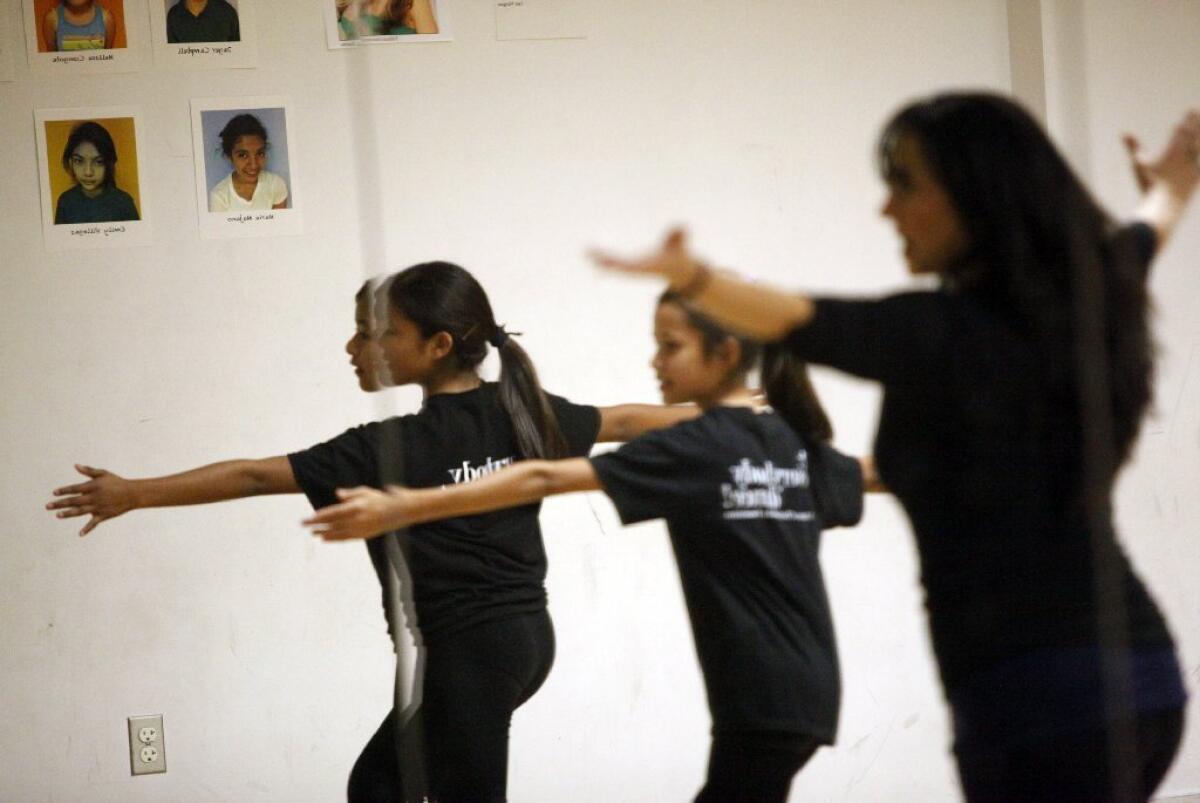Don’t count on dance class to give your kid a workout, study warns

After-school dance classes provide much less exercise than after-school sports, a new study finds.
- Share via
Only 8% of kids enrolled in after-school dance programs got enough exercise during class to meet federal guidelines for moderate-to-vigorous physical activity, a new study finds.
Even worse, only 6% of adolescents got the recommended 30 minutes of moderate-to-vigorous exercise during their dance classes, the study says.
Researchers put accelerometers around the waists of 264 girls in San Diego who took beginning or intermediate classes in ballet, tap, jazz, hip-hop and other types of dance. The devices recorded how much time the girls spent in motion and how brisk that motion was.
It turned out that none of the seven dance genres tested could be counted on to provide 30 minutes of meaningful exercise, as the Centers for Disease Control and Prevention advise kids to get, according to a report published Monday in the journal Pediatrics. (The CDC also recommends that kids get 30 minutes of exercise at school.)
But some of the classes missed that mark by more than others. For instance, kids ages 5 to 10 who took flamenco dancing averaged only six minutes of moderate-to-vigorous activity during a 50-minute class. Those who took ballet averaged slightly less than 14 minutes of rigorous exercise during a 49-minute class.
Hip-hop classes came closest to meeting the CDC guidelines, offering 27 minutes of significant physical activity over the course of a 50-minute session. Jazz and partnered dance (a category that included ballroom, swing and merengue) enabled kids to log 22 minutes of moderate or vigorous exercise in a 40- or 53-minute class, respectively.
When the researchers calculated the proportion of class time spent getting meaningful exercise, hip-hop came out on top (57%) and flamenco was the worst (14%). In fact, students who took flamenco were sedentary 55% of the time.
The average length of a dance class was slightly longer for adolescents ages 11 to 18, but these older students managed to get less exercise anyway.
Ballet had the best showing for this age group, with almost 17 minutes of moderate-to-vigorous activity during a 55-minute class. Hip-hop was a close second, with almost 16 minutes of real exercise during a 50-minute session. And flamenco came in last, with only four minutes of exercise over a 44-minute period.
But all of the dance classes for adolescents were judged to be equally bad, with none of them requiring students to move either moderately or vigorously more than 31% of the time. In other words, the differences between them were not large enough to be considered statistically significant.
The researchers, from San Diego State University and UC San Diego, speculated that compared with younger kids, the adolescents might be spending more time standing around in class because they are learning routines. It’s also possible that the accelerometers were capturing movement by the younger kids that occurred during class but wasn’t really dancing.
Overall, dance classes delivered much less exercise than after-school sports, the researchers wrote. Although both soccer practices and dance classes required kids to stand around about 30% of the time, an additional 28% of a soccer practice involved vigorous activity, the type that is most effective at preventing childhood obesity. The comparable figure for dance classes was 7%.
Other studies using similar methods to measure physical activity have found that 50% to 100% of kids in sports programs are able to meet the CDC goal of getting 30 minutes of moderate-to-vigorous exercise, compared with fewer than 10% of kids in this study. That’s a shame, they wrote, because dance classes might appeal to girls who aren’t interested in sports.
“The public health promise of dance classes is not being delivered,” they concluded.
Follow me on Twitter @LATkarenkaplan and “like” Los Angeles Times Science & Health on Facebook.







